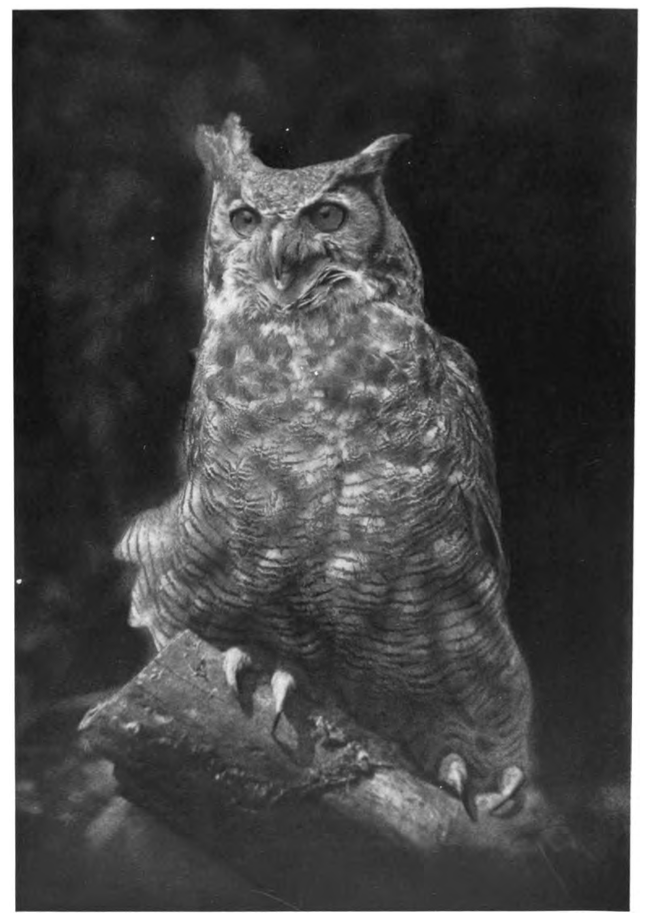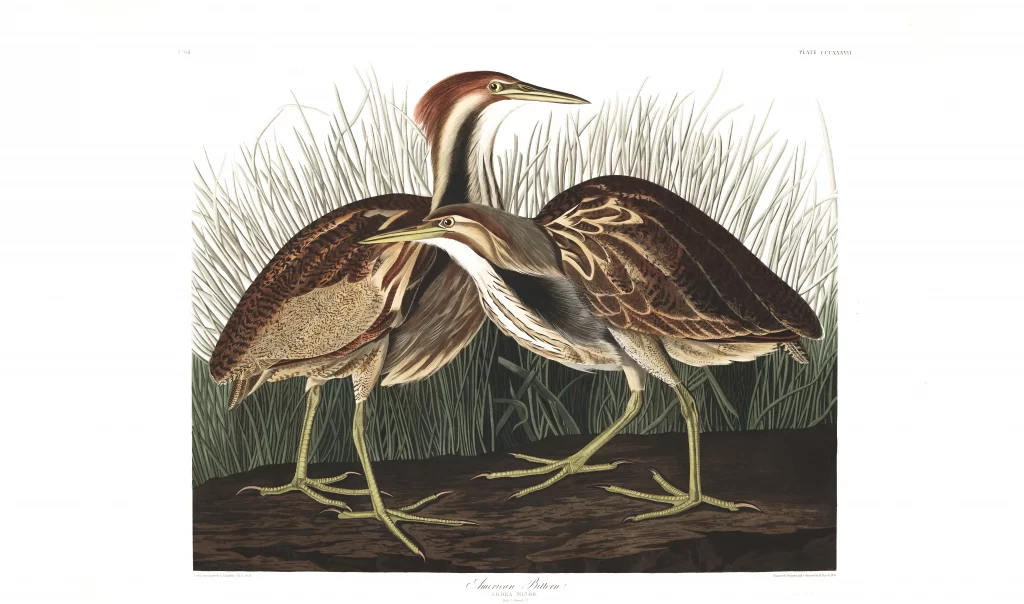Horned Owl
By Gene Stratton-Porter
Annotations by Rene Marzuk

“When the moonlight floods the swampland, When the bittern’s wailing croak,[1] And the wildcat’s scream of anger Clog the heart of forest folk, I search tall trees for frightened crows,[2] Hunt ducks ’neath sedges, hares at play, Then I set late travelers trembling, By demanding until break of day: “‘Who, who, huh, whoo, who waugh? Don’t I make cold shivers run? Who, huh, whoo? I’d question all day, If my eyes could bear the sun.’”[3]
STRATTON-PORTER, GENE. “HORNED OWL,” IN MORNING FACE, 63. NEW YORK: DOUBLEDAY, PAGE & COMPANY, 1916.

[1] The American Bittern, protected under the Migratory Bird Treaty Act of 1918, is a medium-sized heron commonly found in wetlands and most active at dusk and through the night. The website All About Birds includes audio samples of the American Bittern’s distinctive calls and songs.
[2] The Great Horned Owl is the most common owl in North America. Its “horns” are actually tufts of feathers that have nothing to with hearing, although their ultimate purpose still baffles and divides researchers. The Great Horned Owl is a powerful predator that is also known as the “tiger of the woods.” Its penetrating hoots are quite diverse, constituting a lexicon all of their own.
[3] Contrary to popular belief, owls’ pupils can contract in response to brightness, so they can also see in daylight.
Contexts
In her introduction to the 1996 anthology Coming Through the Swamp: The Nature Writings of Gene Stratton Porter, Sydney Landon Plum reveals that, after the commercial success of Gene Stratton-Porter’s 1909 novel A Girl of the Limberlost, the author and conservationist talked Doubleday, Page & Company into publishing once nature work for each of her subsequent novels. Morning Face, a collection of prose and poems published by Doubleday in 1916, probably saw the light as a result of this agreement. Most of the book’s illustrations are photographs by the author herself, an accomplished self-taught photographer. In fact, according to Plum, Stratton Porter “ardently supported the use of photography for nature study as a substitute for the common practice of killing scores of the natural subjects in order to study them.” As evident in the quatrain that serves as the dedication of Morning Face, Stratton-Porter had a juvenile audience in mind for this book, although one can also make the case that, by identifying herself with the “little girl with a face of morning,” she is also extending her appeal to the inner children within readers of all ages:
One little girl with a face of morning,
a wondering smile her lips adorning,
wishes her pictures and stories to share,
so she sends them to children, everywhere.
Definitions from Oxford English Dictionary:
bittern: A genus of grallatorial birds ( Botaurus), nearly allied to the herons, but smaller. spec. The species B. stellaris, a native of Europe and the adjoining parts of the Old World, but now rare in Great Britain on account of the disappearance of the marshes which it frequents. It is noted for the ‘boom’ which it utters during the breeding season, whence its popular names mire-drum, and bull of the bog, and the scientific term botaurus (see above). With qualifying adj., as American bittern n. Botaurus lentiginosus of N. America. least bittern n. Ixobrychus exilis of N. America. little bittern n. any of several small bitterns of the genus Ixobrychus.
sedge: A name for various coarse grassy, rush-like or flag-like plants growing in wet places.
waugh: An exclamation indicating grief, indignation or the like. Chiefly as attributed to North American Indians, etc.
Resources for Further Study
Kathryn Aalto’s “The Legend of Limberlost,” available through the Smithsonian Magazine‘s website, offers a portrait of Stratton-Porter that emphasizes her love of nature and her conservationist efforts.
Gene Stratton-Porter’s Cabin at Wildflower Woods is a museum open to the public in Rome City, Indiana. Stratton-Porter designed the cabin, which was completed in 1914 and sits on 148 acres of fields, woods, and gardens.